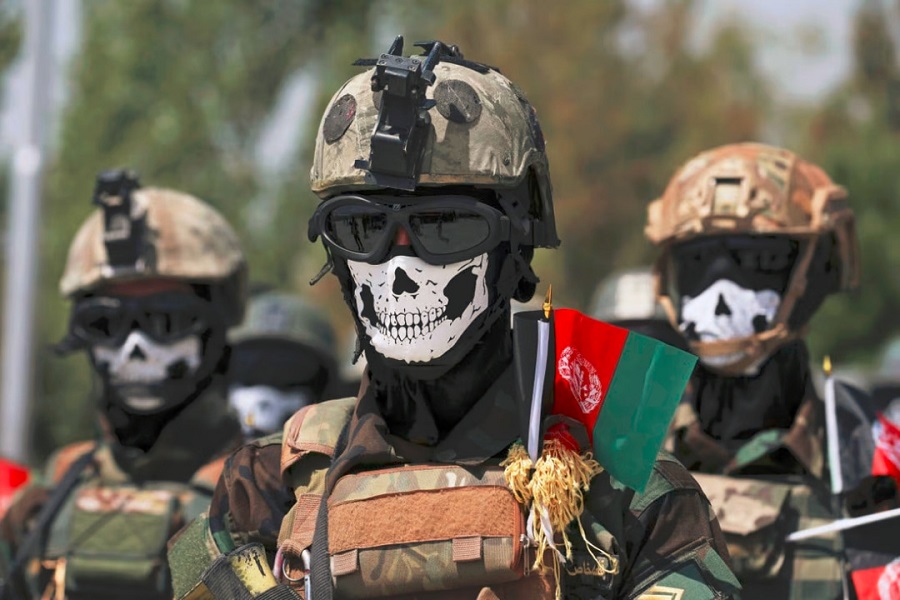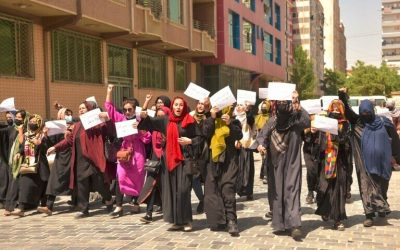
Watchdog report faults Pentagon for problems that led to 2021 collapse of Afghan security forces
02 March 2023
A new report by an independent U.S. watchdog agency says the Department of Defense contributed to the sudden collapse of the Afghan security forces in August 2021 partly due to poor planning and lack of accountability over at least some of the billions of dollars in weapons and equipment it provided.
The new report by SIGAR, the Special Inspector General for Afghanistan Reconstruction, also said the Pentagon did not cooperate fully with its investigation. And it disclosed that American troops left behind a total of $7.2 billion in aircraft, missiles, communications gear and other military equipment for the Taliban to potentially use.
That included at least 78 aircraft worth $923.3 million, 9,524 air-to-ground munitions valued at $6.54 million, over 40,000 vehicles, more than 300,000 weapons, and nearly all night vision, surveillance, communications, and biometric equipment provided to the ANDSF were left behind, SIGAR said, citing a March 2022 Pentagon report to Congress.
The report, mandated by Congress after the sudden fall of Kabul when US forces left the country, said the State Department was also unresponsive to some of its requests for information to help it figure out why the U.S.-funded Afghan military crumbled so quickly, allowing the Taliban to take over the country.
In their official responses, the Pentagon and State Department disputed at least some of the findings, and said they did cooperate with SIGAR’s investigation.
A Department of Defense spokesman, Army Lt. Col. Rob Lodewick, told USA TODAY on Monday that the Pentagon was “obviously well aware of the report and its scope, and we contributed to it.”
“We continually and historically contribute to and facilitate SIGAR’s work,” Lodewick told USA TODAY, “and we will continue to do so moving forward for security and defense matters.” He noted that SIGAR “echoes that in its opening pages.”
What were the report’s key findings?
Since 2002, SIGAR said, the United States has allocated nearly $90 billion in security assistance to the Afghan National Defense and Security Forces (ANDSF), with the goal of developing an independent, self-sustaining force capable of combating both internal and external threats.
After the ANDSF collapse of 2021, the House Committee on Oversight and Reform and the House Armed Services Committee directed SIGAR to find out what happened, and to provide an accounting of all U.S.-provided equipment to Afghan forces.
In the new report, it provides numerous details of what it says were lapses in oversight, bad planning and other shortcomings on the part of the U.S. military.
Among those U.S. shortcomings:
- The U.S. set the stage for the Afghanistan government collapse long before the August 2021 meltdown, by failing to create “an independent and self-sustainable ANDSF, despite 20 years and $90 billion of international support.”
- Due to the ANDSF’s dependency on U.S. military forces, the decision to withdraw all U.S. military personnel and dramatically reduce U.S. support to the ANDSF “destroyed the morale of Afghan soldiers and police.” The U.S.-Taliban agreement signed under the Trump administration in 2020, especially, resulted in a sense of abandonment within the Afghan government and its military and police forces, which “set in motion a series of events crucial to understanding” the country’s collapse.
- Even though air strikes had proven to be perhaps the most “critical force multiplier” in fighting the Taliban, the 2020 withdrawal agreement limited them, which “left the ANDSF without a key advantage in keeping the Taliban at bay.”
- The U.S. also decided to withdraw on-site contract maintenance from Afghanistan in May 2021, which reduced the availability of aircraft needed to move stockpiles of U.S.-provided weapons and supplies around the country. As a result, Afghan defense and security units, “complained that they lacked enough ammunition, food, water, and other military equipment to sustain military engagements against the Taliban.”
Did the US military refuse to cooperate fully with the SIGAR?
SIGAR says so. In the report, it notes that the report is the final version of a major interim report issued last May, which that was extremely critical of the Pentagon on a number of fronts when it came to its performance in Afghanistan over the course of the nearly 20-year war there. That report noted that the U.S. military left behind a vast amount of equipment when it cleared out of Afghanistan, potentially giving the Taliban a weapons windfall to use.”The Department of Defense (DOD) and Department of State declined to review that interim draft, denied us access to their staff, and mostly declined to answer requests for information,” the new report says. “This limited SIGAR’s ability to perform this evaluation.”
Still, investigators said, “this final version includes additional information that we received from U.S. and former Afghan officials over the past eight months without support from U.S. agencies,” including quotes from U.S. and Afghan interviewees who witnessed the collapse of the ANDSF.
The watchdog organization also said it offered DoD, State, and USAID the opportunity to review and comment on the final report.
“USAID had no comments. State deferred to DOD for comments. In comments to SIGAR, DOD noted that the report has ‘important insights’ but also disputed certain conclusions.”
On Monday, a Defense official also took exception to SIGAR’s accusations, saying DoD did review the interim report back in May and that it “opened its files” to the report’s author and offered him full access to its staff. “He came over once, and we never saw him again,” said the official, who spoke on the condition of anonymity to discuss the report.
“We were kind of surprised that SIGAR pointed such a heavy finger at us,” the official told USA TODAY. “SIGAR asked us for comment on the interim report in May and we expressed our intent to provide formal comment for the final report, which we did. We just didn’t do it on their timeline for a draft report.”
In its report, SIGAR said it “strongly disagrees with DOD’s characterization of their engagement on this report,” saying it only provided limited responses to SIGAR’s request for information “and missed every deadline
for responding to SIGAR’s questions or for providing feedback to vetting drafts of this report.”
Who else did SIGAR blame besides the US?
The SIGAR report, as with some of its previous findings, found plenty of blame to spread around.
Much of that criticism was directed at the Kabul government. SIGAR said the Afghan government “failed to develop a national security strategy,” especially following the withdrawal of U.S. forces. Instead, it said, former President Ashraf Ghani frequently changed defense and security force leaders and appointed loyalists who politicized the ANSDF. These actions, and constant turnover, weakened chains of command, morale, and trust in the ANDSF, it said.
SIGAR also found that no one country or agency had ownership of the ANDSF development mission over the years. As a result, the NATO-led coalition and temporary organizations like the International Security Assistance Force (ISAF), ended up being staffed “with a constantly changing rotation of military and civilian advisors” that impeded continuity and institutional memory.
Advisors were often poorly trained and inexperienced for their mission as well, according to SIGAR. These shortcomings, it said, “undermined the U.S. government’s ability to build relationships with and capacity among Afghan forces.”
Source: USA Today
there is not post in layout 2

Zalmay Khalilzad: Iran’s Strategic Ambitions Escalate as Influence Grows in Iraq, Posing Regional Concerns
The recent attack on the Iranian consulate in Syria has...















